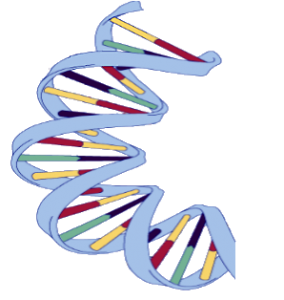
Rosetta’s NavCaM snapped this shot of Comet 67P/Churyumov-Gerasimenko on November 20, 2014 ((C) ESA/Rosetta/NAVCAM – CC BY-SA IGO 3.0)
Scientists Find Oxygen in Comet’s Atmosphere
A couple of days ago we told you about the discovery of a boozy comet that dispensed large amounts of alcohol, sugar and other organic compounds as it made its pass by the sun last January.
Now, researchers from the Center for Space and Habitability (CSH) at the University of Bern say that after conducting a thorough chemical analysis they found that the atmosphere of Comet 67P/Churyumov-Gerasimenko contains a high amount of oxygen molecules.
Data gathered last year by the ESA Rosetta Mission’s ROSINA mass spectrometer, found that clear traces of oxygen molecules in the comet’s atmosphere. In fact they say that they found oxygen to be the fourth most common gas in the comet’s atmosphere, behind water, carbon monoxide and carbon dioxide.
The German researchers say that it had long been thought that the presence of oxygen in our early solar system could only be found when it was combined with other elements such as with hydrogen, which would form water.
“We had never thought that oxygen could ‘survive’ for billions of years without combining with other substances,” says Prof. Kathrin Altwegg, leader of the ROSINA mass spectrometer project and co-author of a study that outlines the researcher’s findings.
Oregon Engineers Develop System That Lets Robots Walk like Humans
(Dynamic Robotics Laboratory/Oregon State University)
Scientists and engineers have spent a lot of time over the years trying to design and build robots that mimic human activities like walking and talking.
Now, a group of engineers from Oregon State University say that they’ve been able to come up with the most realistic human-like walking system for robots that has ever been created. With more research and fine tuning they say their system could improve a robot’s versatility and performance.
The Oregon engineers based their human-like locomotion system on a concept called “spring-mass” walking. Conceived about ten years ago, this system applies computer control to various mechanical systems. This idea they said would allow robots to maintain their balance, easily traverse rough terrain, maintain balance and basically walk just like humans.
The researchers said that their developments in robotic locomotion could also someday help those with disabilities.
 Inexpensive Test Quickly Diagnoses Hepatitis B and Male Infertility
Inexpensive Test Quickly Diagnoses Hepatitis B and Male Infertility
A group of Canadian researchers have developed a quick and inexpensive way to test for hepatitis B and male infertility. They say that their new paper-based DNA test could especially be helpful in diagnosing these unrelated, but serious, conditions in developing nations.
Writing in the Journal of the American Chemical Society the researchers say that within 10-minutes, their new test can detect an early-stage hepatitis B infection in a patient’s blood serum, which would give medical professionals valuable time to develop treatment before it can spread. The test can also be used to predict male fertility by checking the DNA integrity of sperm as precisely as current proven methods.
The researchers say that their new diagnostic test can be made from materials that cost less than $1 per device.
Vivid End-Of-Life Dreams Can Comfort the Dying
You may have heard that dying people have some rather amazing and vivid dreams or visions in the final weeks and days of their lives.
A new study by researchers at Canisius College in Buffalo, New York suggests that these end-of-life dreams are an important and comforting part of the dying process that actually improve quality of life of those about to die.
While some in the medical community consider them to be no more than delusions or hallucinations, the researchers found that to someone dying these dreams and visions are quite realistic and often very meaningful.
The researchers found that the most common and most comforting theme of these visions and dreams were those of deceased family and friends.
The study also showed that the end-of-life dreams become more frequent the closer a person came to death.


 Inexpensive Test Quickly Diagnoses Hepatitis B and Male Infertility
Inexpensive Test Quickly Diagnoses Hepatitis B and Male Infertility




















Comments are closed.